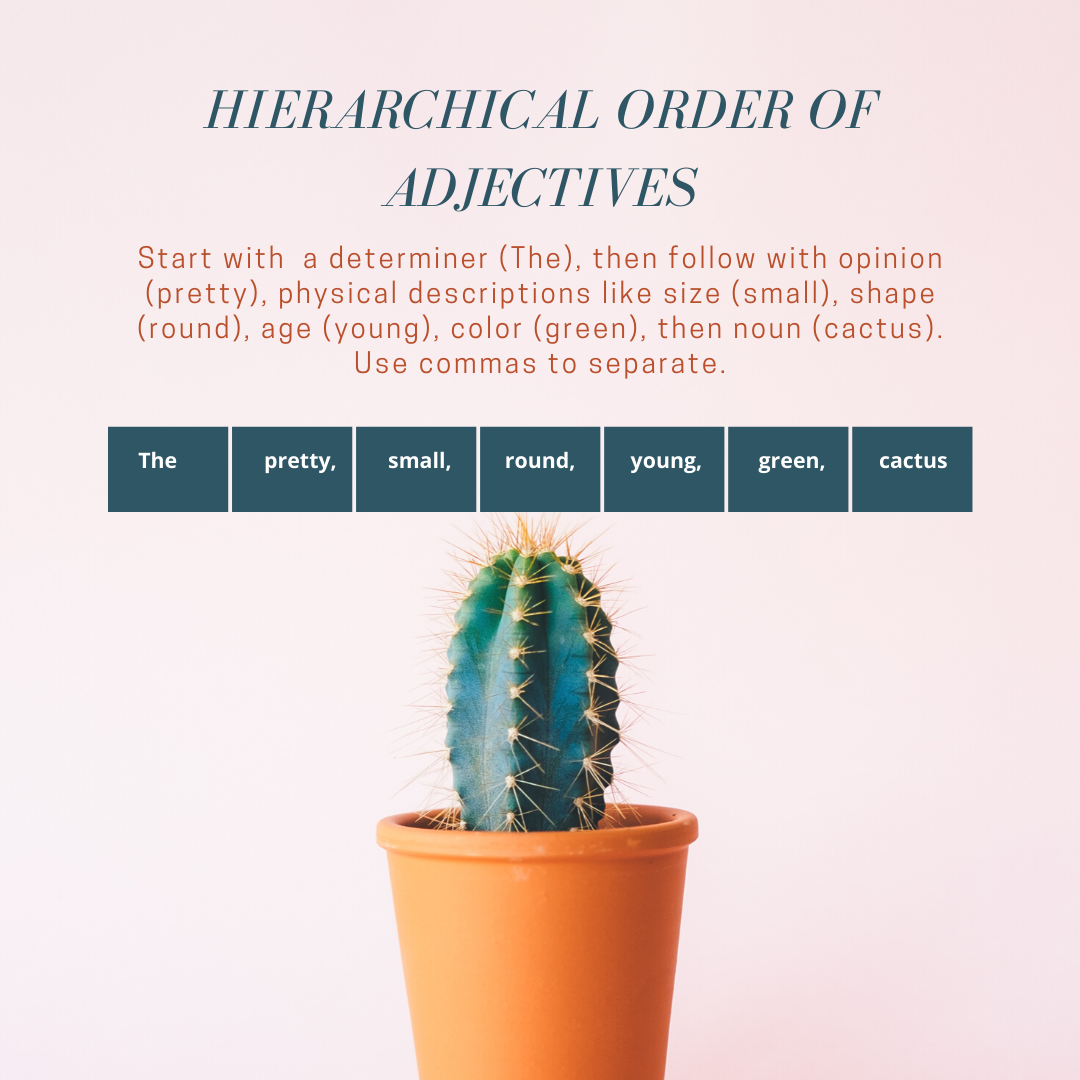The simplest level of English word order within a sentence is that subjects come first followed by verbs and then direct objects.

When you have more complicated sentences, use the following general order.
| much (noncount nouns) | more | most |
| many (count nouns) | more | most |
| little (size) | littler | littlest |
| little (number) | less | least |
| old (people and things) | older | oldest |
| old (family members) | elder | eldest |
When an English sentence includes more than one adjective modifying a given noun, the adjectives have a hierarchy you should follow. The adjectives that modify the noun show that hierarchical order. You should, however, keep a string of adjectives to two or three. The example includes a longer string of adjectives simply to clarify the word order.
Some languages, such as Spanish, insert “no” before a verb to create a negative sentence. In English, the negative is often indicated by placing “not” after the verb or in a contraction with the verb.
Example
I can’t make it before 1:00 p.m.
Incorrect example: I no can make it before 1:00 p.m.
Adapted from Appendix A, “Writing for Nonnative English Speakers” in Writer’s Handbook v 1.0 used according to Creative Commons CC BY-NC-SA 3.0